Outbound sales is a powerful marketing technique used to outsell competitors and generate more revenue for your company.
However, outbound sales can be a complex subject to discuss. There are many outbound tactics and strategies that you can use.
But what if I told you that there was only one tactic, out of all the outbound sales techniques out there, that guaranteed success?
The truth is, there isn’t just one strategy, but it’s true that some are more effective than others.
In this blog post, we’re going to cover all of the best practices for outbound sales in 2021 and beyond so you can drive results for your business.
Ready? Let’s dive in.
What is outbound sales?
Outbound sales is a strategy that relies on outbound tactics such as cold emailing, cold calling, and even social media.
There are many outbound strategies, but they all rely heavily on the use of outbound techniques like:
- Cold Emailing: one of the most powerful outbound sales tools for generating sales leads
- Cold Calling: another effective way to generate sales leads and close deals
- Social Media Marketing: used in conjunction with other outbound methods for more significant results
These three lead generation strategies are combined into what we call outreach or outreach campaigns, which you can personalize depending on your target market’s needs.
We’ll cover outreach in more detail later, so for now, let’s take a look at the differences between outbound and inbound sales.
Inbound vs. Outbound Sales
Inbound sales teams typically rely on lead generation tactics such as search engine optimization (SEO), pay-per-click (PPC), and content marketing to attract visitors. Some companies will even have inside sales teams to handle inbound leads and inquires.
With outbound sales, the outbound marketer does not passively wait for inquiries but proactively reaches out by emailing prospects or making sales calls to generate leads and close deals.
Outbound sales teams tend to have a higher close rate than inbound ones because it allows you to quickly respond with information specific to your prospect’s needs before another company can reach out first. Not to mention, it gives you greater control over your efforts.
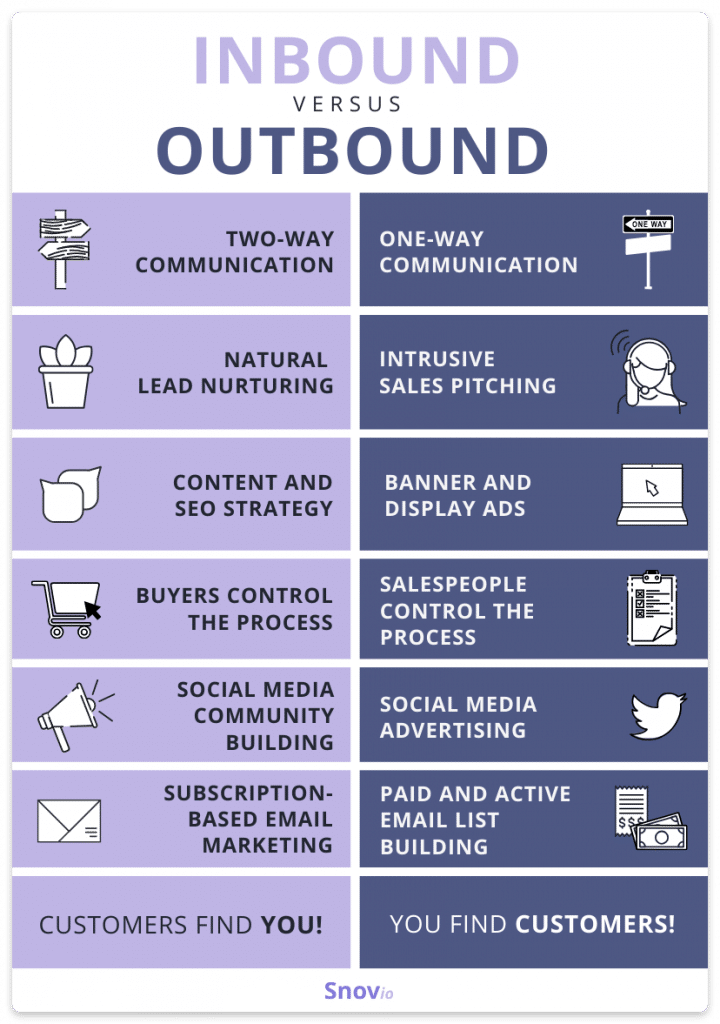
For example, an outbound sales representative could be doing anything from cold calls to cold emailing, following up with hot and qualified leads who attended a sales webinar or connecting with prospects on social media.
In short, outbound sales puts you in the driver’s seat.
A successful outbound strategy will use many different channels such as social media, cold calling, cold outreach campaigns, and others, so make sure you know which methods are best suited for the target audience you’re trying to reach.
How to develop a successful outbound sales strategy
To develop a successful outbound sales strategy, sales leaders must consider their overall lead generation funnel and how an outbound strategy will aid a common goal, be it more leads or bottom-line revenue.
In short, it’s essential to have a strategy that will work for the company, so all outbound channels should align with your goals or KPIs. When setting your target goals and KPIs, don’t forget to define which metrics you will be measuring.
Now, let’s look at four key steps to developing a successful outbound sales strategy for your sales team.
1. Define your target audience and buyer personas
The first step to any sales or marketing strategy, whether inbound or outbound, is defining the audience you’re trying to reach.
This means identifying the specific goals, needs, and pain points of your ideal customer profile (ICP).
For outbound sales, this is paramount because it will help determine where to find leads (e.g., which social media channels) and which messaging to use on prospects when you reach out to them with a sales call or email pitch (more on that in point two).
So before developing an outbound strategy, identify all relevant information about who would be interested in hearing from you first: their age ranges, job title, gender breakdowns, marital status, etc., as well as what they’re looking for via outbound content like blogs and webinars.
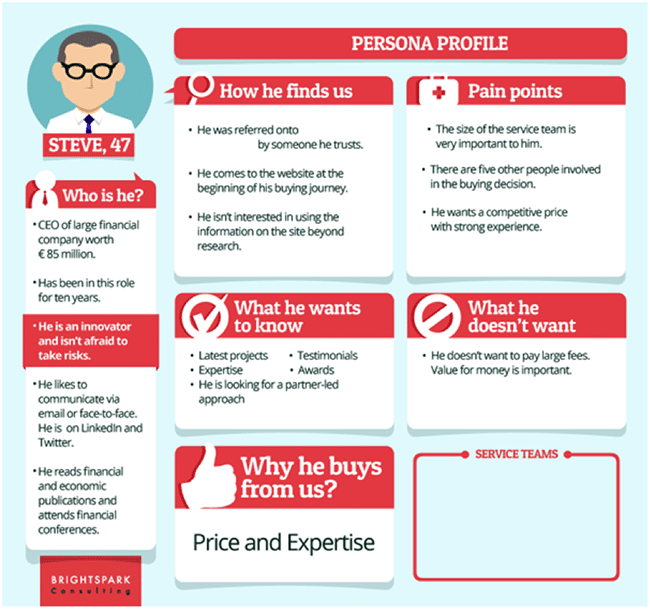
Next comes buyer personas which are semi-fictional representations of your target customers based on market research. Buyer personas typically include in-depth information such as their interests, goals, and challenges.
Once you have a solid understanding of your target audience and have several buyer personas identified, you will be better prepared to appeal to prospects with your messaging. The next step would involve developing persona-based messaging for each different type of buyer so you can stay consistent across all forms of outreach.
Now that you have a list of potential customers and who they are, it’s time to develop sales prospecting and outreach plans.
2. Develop outreach plans for outbound prospecting
Once you’ve nailed down your ideal buyers, you should have an idea of which mediums will have the most success when it comes to reaching said buyers.
Essentially, you should have at least one plan for each type of outbound sales medium you target, from cold email, cold calling, and social media outreach. You never want to go into prospecting blind without a plan.
Next, outline the exact steps and processes for each strategy. An example plan or step-by-step process utilizing cold emailing might look as follows:
Step 1: Use a lead list to discover target companies or accounts that fit your target market.
Step 2: Perform research to find decision-maker contact information and who would be the best person(s) to reach out to.
Step 3: Use an email finder tool to obtain an email address for said decision-maker.
Step 4: Craft an outreach message (it helps to use email outreach templates) or drop this contact into an outreach campaign using relevant messaging for your identified buyer personas.
Step 5: Follow up with this prospect in X days, as determined in your overall outreach plans and strategy. Alternatively, let a sales automation tool cover the follow-up process.
An optional additional step could be connecting with the prospect on a social media platform like LinkedIn, which we will touch on in the next point.
3. Don’t be afraid to utilize omnichannel and multi-touch strategies
These days, if you’re using a sales automation or sales enablement platform, chances are it includes features to accommodate an omnichannel strategy. And if you aren’t yet using automation, it could be good to include this step in your manual process.
This is important because it typically takes multiple touchpoints in order to get through to a prospect. If you’re cold-calling, the average is around 8 touchpoints.
An omnichannel or multi-touch strategy is exactly as it sounds, encompassing multiple touchpoints for reaching a prospect. Taking the example from the above point, you could include a touchpoint to connect with the prospect on LinkedIn after sending a cold email.
A more mature outbound sales process will take this a step further and include different levels of LinkedIn automation and sending personalized messages on the platform in between their cold emails to maximize the chances of a positive response.
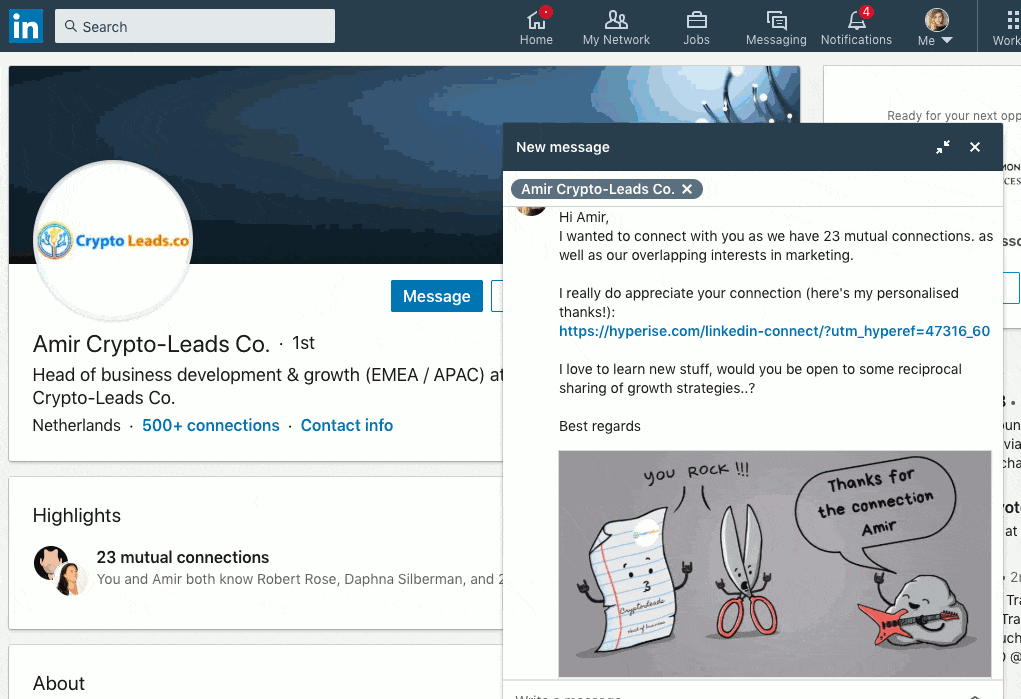
For example, using a tool like Hyperise, you can send clever and unique personalized messages to prospects on LinkedIn as shown above, and double your conversion rate.
4. Automate outbound sales as much as possible using the right tech and tools
As outbound sales become increasingly complex, it’s best to automate as much of the process as possible. This helps to keep your sales reps motivated and spending less time on mundane tasks like data entry or admin work.
Here are just a few ways in which automation can help your sales team focus on closing deals:
Automated email campaigns — Reach out to target customers and put the follow-up process on autopilot to ensure a prospect never falls through the cracks again.
Auto-dialing for cold calling — Maximize your cold calling efforts by keeping reps on the phone with available customers and automating voicemail drops to those who don’t pick up in real-time.
CRMs — Automatically sync and add contact history to prospect records and sync this data with the other sales tools and databases in your toolbox. Common CRMs include Salesforce or Hubspot.
Additional prospect research tools — This can vary from email finder tools to tools like Crystal Knows that provide intelligent data on your prospects.
When it comes to outbound sales, and particularly B2B sales, there is no shortage of sales and lead generation tools available to help sales organizations work more efficiently.
What is a typical outbound sales process?
The typical outbound sales process can vary depending on how many leads an organization is managing at one time but generally include the following steps:
- Lead generation
- Qualifying potential customers
- Proposing a solution to prospects via email or phone call (or both)
- Following up by making an additional contact attempt after not hearing back from a prospect in order to close the deal
- Closing deals through initial discussions or presenting solutions directly during meetings/presentations
- Closed/won status and moving on to onboarding and setting customer or client expectations
Of course, this may vary depending on what you are selling and on your target audience but the primary principles remain the same for moving deals through the pipeline.
One differentiator between sales organizations is that more mature companies tend to lean heavily on advanced outbound sales strategies such as automation and personalization.
Outbound sales using cold email
One of the best ways to generate leads and sales is via cold email, whether you’re in B2B sales or B2C.
This outbound sales strategy is so effective because it can be automated and personalized.
Today, most everyone knows your cold email subject line can make or break your chances of your email getting opened in the first place.
But in a constantly evolving marketplace, it’s going to take a bit more than a killer subject line to get a response to your cold email.
In order to succeed in a competitive market, sales representatives must be prepared to “WOW” their prospects.
That’s where a tool like Hyperise enhances a typical sales tech stack, allowing reps to hyper-personalize images and GIFs they include in their sales emails.

Personalized emails can deliver up to 6X higher engagement rates, making it a no-brainer for sales professionals who want to wow their prospects and get a positive response, therefore leading to a booked meeting or closed deal.
Outbound sales using social media
Almost any sales organization can benefit from utilizing social media to connect with leads and prospects.
The best part is, it can fit into any stage of the sales cycle from the first interaction with a cold lead to follow-ups with a hot prospect.
For sales teams targeting B2B organizations, SaaS companies, or startups, LinkedIn will prove an incredibly powerful platform for your outbound sales efforts.
This is because it is one of the most active and best performing outbound social media channels for B2B organizations:
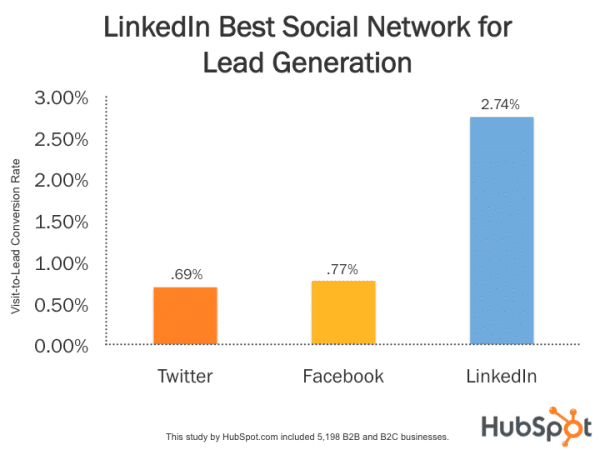
In order to get the most from LinkedIn for prospecting, you’re going to want to differ your approach from every other sales rep out there connecting with your prospects.
One way to do this is by sending personalized messages when connecting and reaching out to your prospects on LinkedIn.
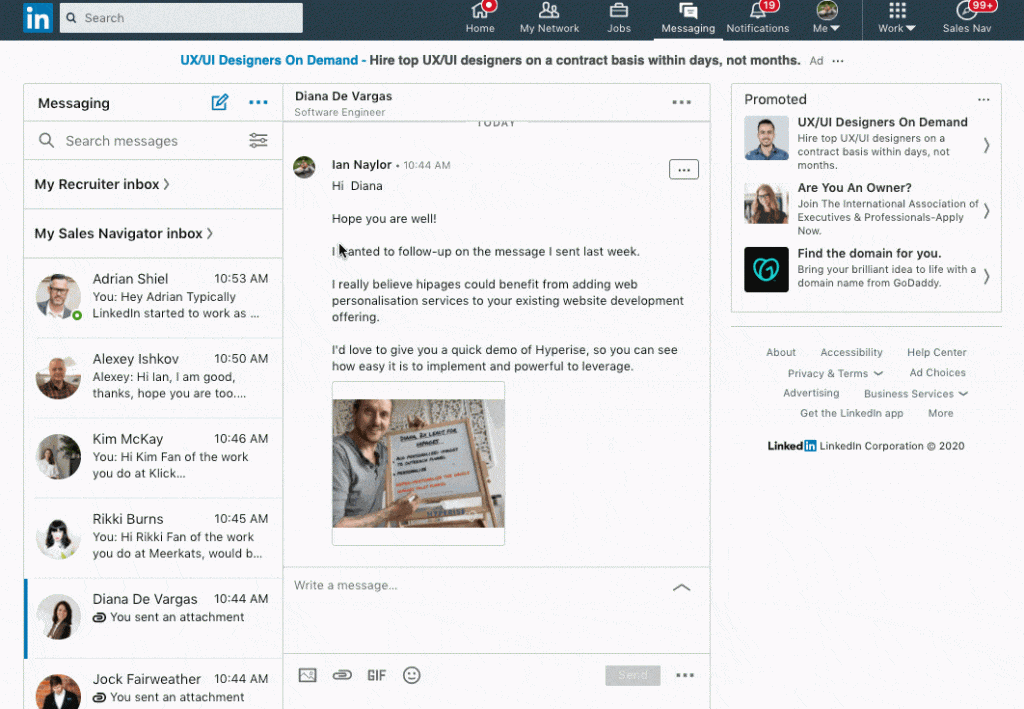
Just think, your prospect could receive dozens of similar messages from your competitors each week, so what can you do to stand out from the crowd?
The answer is pretty simple: personalization. Not only do they grab your prospect’s attention, but they’re also far less likely to be receiving similar messages, making them more likely to respond and engage.
Outbound sales via cold calling
It may be 2021 but cold calling is not dead yet by any means. If you feel cold calling is a waste of time, consider that 72% of prospects who hear your pitch will show up to a follow-up meeting.
What cold calling does not require is picking up a phone book and scouring for phone numbers day and night.
Thankfully, there is sales technology to help discover ICP phone numbers, create lead lists, and even auto-dial prospects for salespeople and leave voicemail drops.
All that cold calling requires is persistence, dedication, and an open mind, but we’d be lying if we said cold email or LinkedIn wasn’t our preferred method of prospecting.
Outbound sales best practices & techniques
Now that you are familiar with standard processes for outbound sales, let’s take a look at some of the best practices that lead to higher conversion rates and more closed deals.
Tips for successful prospecting
-Research your outbound prospects and ICPs thoroughly so that you can tailor your messaging to fit their needs.
-Create a personalized and omnichannel outbound strategy for each prospect with specific steps and deadlines in mind.
-Track all outbound activity to make sure you are following up on every lead or meeting request made by an outbound sales rep.
-Don’t forget about referrals! Once a deal has closed and a newly converted customer is happy, be sure to ask for referrals to score some low-hanging fruit.
-Leverage hyper personalization to differentiate yourself from your competitors and engage your prospects.
-Take consistent action each and every day and stay on top of your progress towards hitting sales goals and KPIs.
There is no set amount of time required for outbound sales success. Whether relying on cold calling or emailing, the best way to determine success is by measuring how many deals were closed from said calls or emails.
Once you have your answer, you can continue to optimize down the road to further improve conversion rates.
How to keep sales reps motivated
To keep your salespeople motivated, be sure to provide them with regular feedback, celebrate their successes, and give out incentives for meeting key goals.
Any sales leader knows that your salespeople on the front lines are the key to your organization’s success, so don’t forget to prioritize their happiness and wellbeing.
Provide sales reps with regular feedback and 1:1 coaching to enable them to grow and develop in their career while also keeping them aligned with company goals.
When reps hit (or exceed) their sales quotas, be sure to celebrate those successes and consider offering incentives like bonuses or time off for a job well done.
To keep sales reps more efficient, employ sales automation tech to boost rep productivity and allow them to focus on what they do best (closing deals).
Remember, the last thing your reps want to be doing is updating spreadsheets or copying and pasting email templates all day.
Use sales technology such as CRMs and other sales engagement tools
Any mature sales organization serious about closing deals is going to take advantage of sales software and other sales engagement tools.
It’s no longer necessary to write manual lists, scour phonebooks, or go door to door for outbound sales success.
Today, salespeople can use tech such as CRMs to store prospect and customer data, email outreach, and other sales engagement platforms to engage leads, along with personalization tools to improve your odds of success.
Stand out from the noise with personalization
Personalization is critical when it comes to outbound sales success.
This is because today’s buyers are more mature and have more choices than ever before.
This means outbound sales reps need to differentiate themselves in order to stand out from the noise and close deals.
Claim your space with outbound content that is well-written, personal, and engaging.
Thanks to hyper-personalization tools like Hyperise, this is easier than ever before:
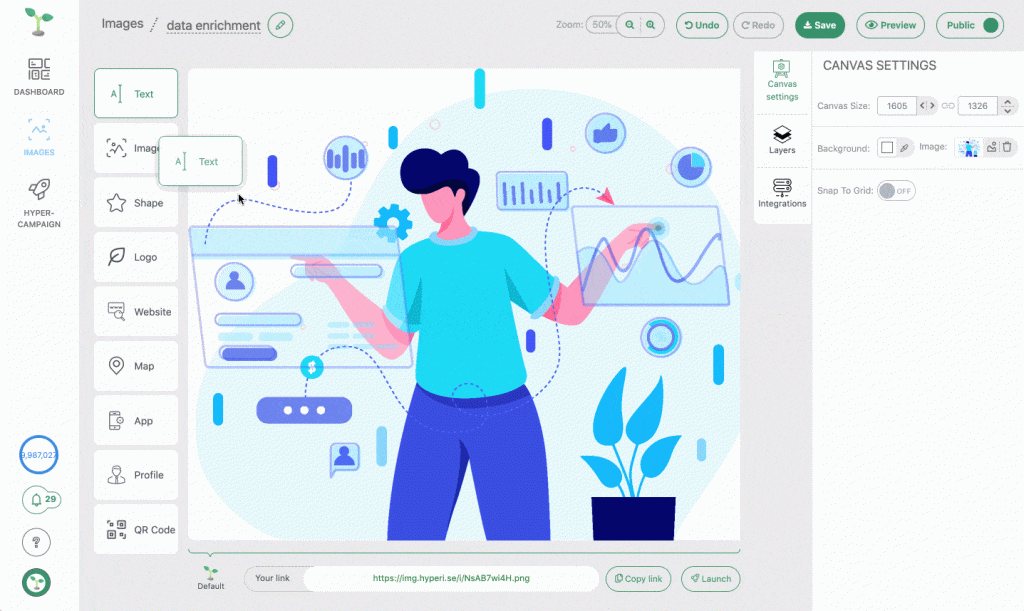
FAQ about outbound sales
Why do sales professionals do cold calling?
Salespeople make cold calls to outbound prospects for a variety of reasons. Still, the primary goal is always to start a conversation with someone who may not have heard about their offer and make them aware of their product or service as an option.
Is cold calling dead 2021?
Cold calling is far from dead and is still utilized by many sales organizations today. However, now there are more advanced outbound prospecting methods like cold emailing and social media outreach that cold calling may not be the best tactic for every sales team.
Is cold calling illegal?
Cold calling is not illegal. However, you may need to adhere to outbound calling best practices, such as not calling hours when people are more likely sleeping or trying to enjoy their time at home. Along with this, be sure to respect do not call (DNC) lists.
Why is it called a cold call?
Cold calling is named as such because you are calling cold leads. Cold leads are prospects who are may or may not be familiar with your brand, product, or service but have yet to expressed interest in what you offer.
What does your outbound sales process look like?
Hopefully, by now you have all you need to know about outbound sales, strategies, and best practices for success.
However, remember that outbound sales is an in-depth discipline that takes time to master.
Now we’re turning the question over to you and would love to know what your current outbound sales process looks like and any takeaways you may have received from this article for outbound sales success.
Last Updated on July 29, 2021